A season of abundance in the Serengeti
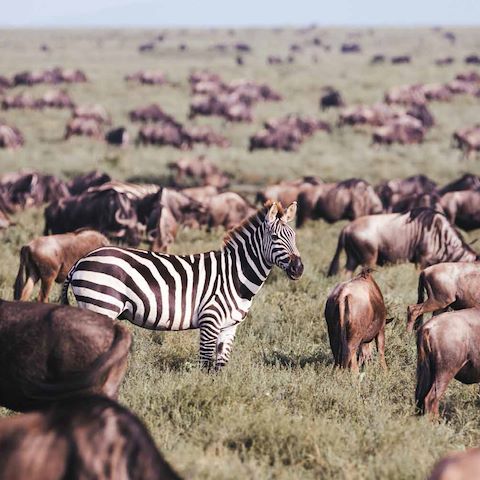
The Serengeti National Park in Tanzania is one of the most renowned wildlife destinations on the planet. This vast ecosystem is home to an extraordinary diversity of flora and fauna, and one of Africa’s greatest spectacles: The Great Migration. As we approach the second half of the year, we look forward to one of the Serengeti’s most remarkable events: the calving season.
This period, which typically occurs from late January to early March, is a time of renewal and survival, a remarkable showcase of the life cycle of the Serengeti’s inhabitants.
The Great Migration
The Great Migration is one of the most awe-inspiring natural spectacles on the planet. This annual event involves over two million animals, including approximately 1.3 million wildebeest, 200,000 Grant's gazelles, and 800,000 zebras, moving as one. Interestingly, the wildebeest is the keystone species in the Serengeti, a role typically held by predators in most ecosystems.
The sheer scale of the wildebeest herds creates a dynamic balance within the Serengeti ecosystem. Their movements influence everything from the health of grasslands to predator behaviour. For instance, zebras graze on taller, tougher grasses, which facilitates the wildebeest’s access to shorter, more nutritious grasses. This grazing pattern also moderates the intensity of annual fires, preserving vital seeds and trees, and promoting vegetation regrowth.
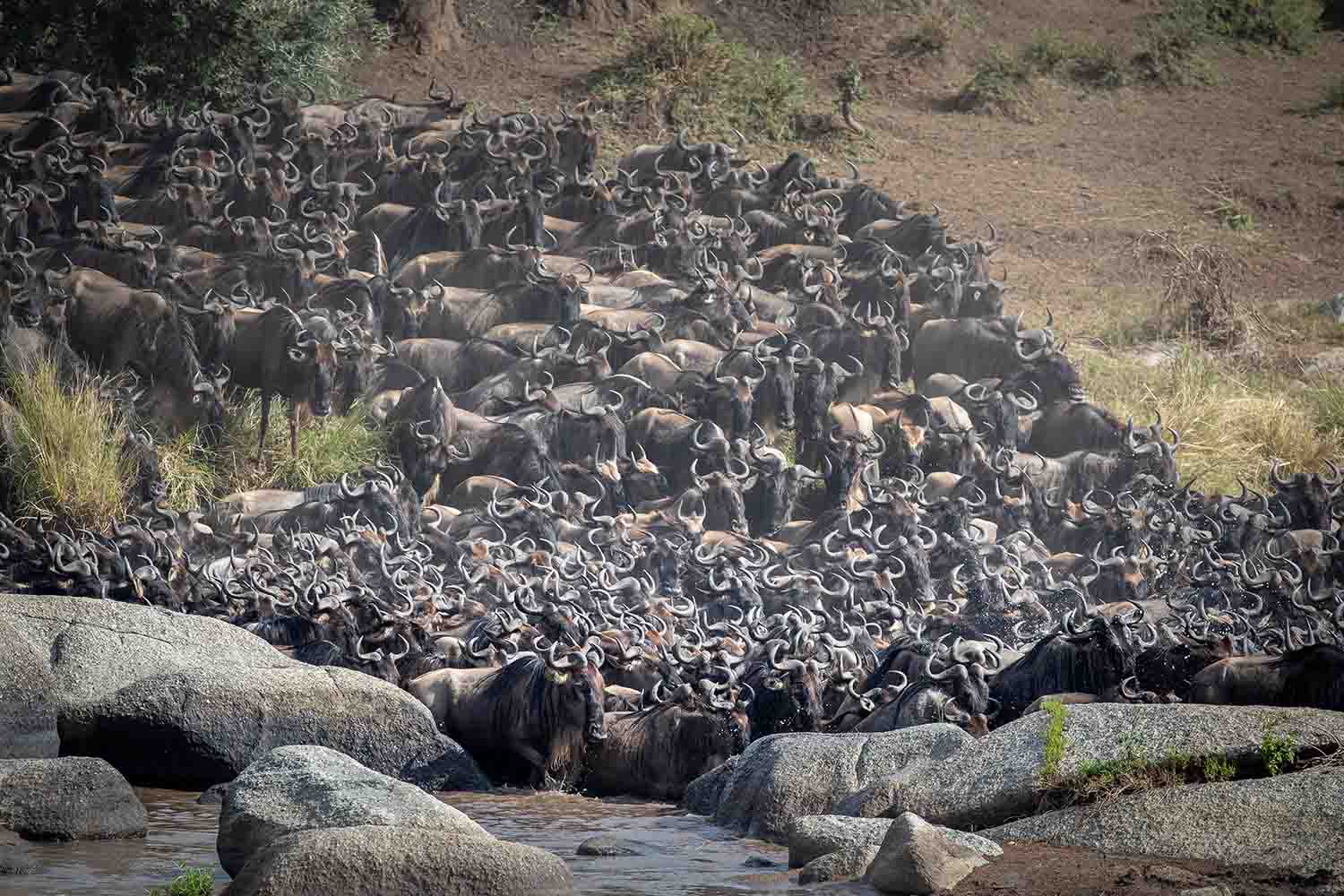
The Serengeti's balance, its diverse wildlife, and the migration’s movements create an unparalleled safari experience.
Understanding the Migration Cycle
While the Serengeti's migration is often thought to have two distinct seasons, it actually occurs year-round. The herds continuously move north and south in response to the seasonal rains, maintaining an annual cycle.
“The entire migration is dictated by rainfall. Ultimately, the animals prefer the southern short grass plains, as this environment provides wildebeests with the greatest sense of safety. It's flat, open, and has an abundance of nutritious grass. If given a choice, they would simply stay there”, says Jean Du Plessis, Managing Director, Wilderness Tanzania.
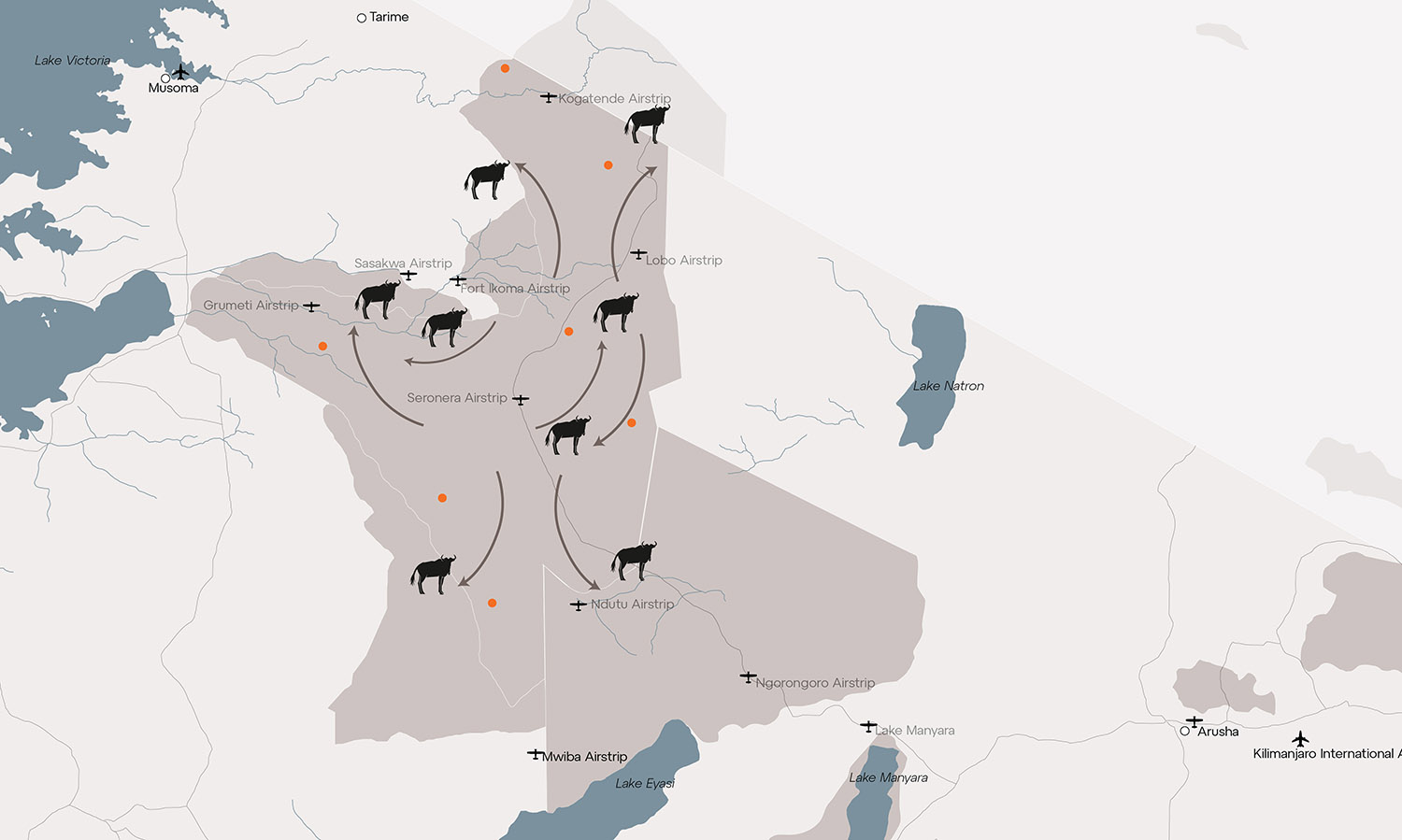
What to expect in Tanzania during December to April:
It’s no accident that the herds move south to feast and birth their young. As the rains arrive in the southern plains, the once arid landscape transforms into endless lush, green plains. The extremely nutrient-rich grasses of the southern plains are a product of ancient volcanic activity; ash from these eruptions spread across the plains near Ndutu, enriching the soil and creating the ideal conditions for the growth of the lush green grasses that now provide a vital and irresistible habitat for wildebeest and their calves.
“Being flat, open volcanic plains, these short grass areas dry out very quickly. The wildebeest are thus forced to move, following the rain or, more accurately, the green grass”, explains Jean.
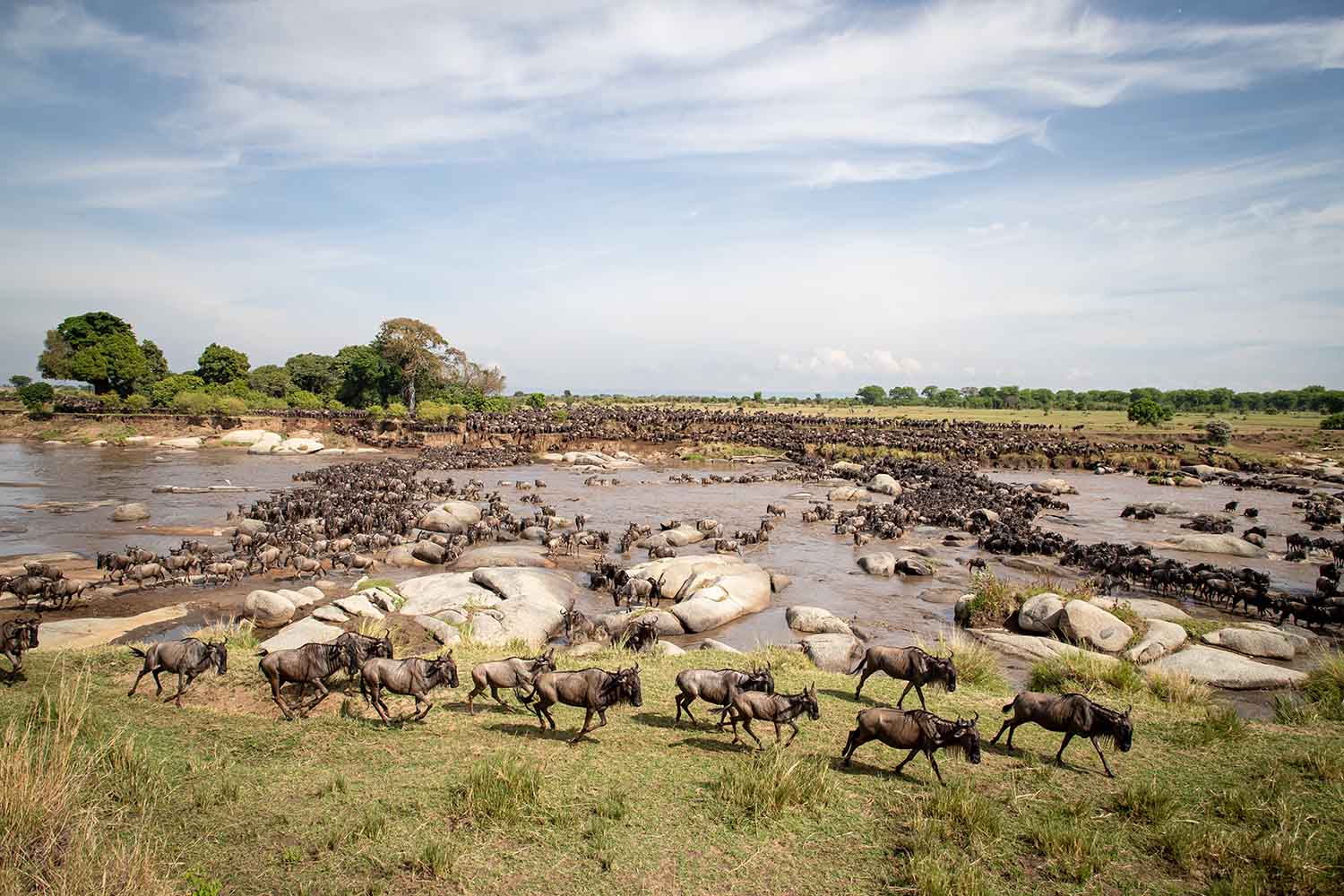
If the rains aren’t good, by April and May the herds begin to disperse towards central, eastern, and western Serengeti.
What can you see in Tanzania July to October:
The migration reaches the northern Serengeti, where herds attempt the dramatic Mara River crossings. These crossings are a highlight of the migration and can be busy with safari vehicles, but witnessing them is a thrilling experience. The herds cross the river multiple times before moving into central regions, spreading out again in November and then heading south in December, restarting the cycle again.
“Although historical safaris in the Serengeti were often limited to drier months due to vehicle constraints, modern Land Cruisers now make the park accessible year-round. Visiting during the quieter months can offer stunning landscapes and excellent wildlife viewing with fewer crowds”, says Catherine Millington, Sales & Marketing Director, Wilderness Tanzania.
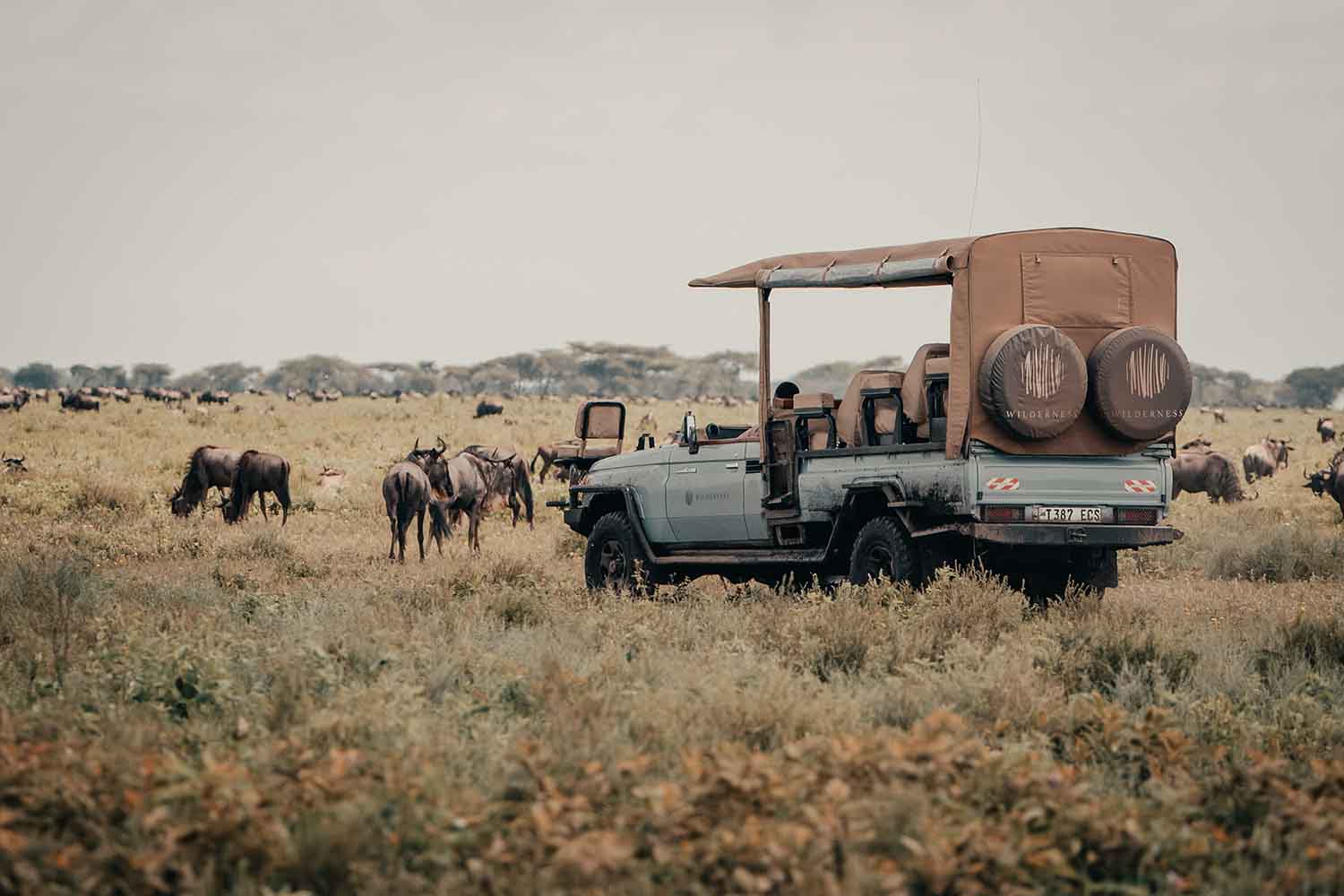
The Calving Season: A time of birth and growth
During calving season, an estimated 500,000 wildebeest are born over a span of just a few weeks; over 9,000 could be born in a single day. This synchrony in birthing is a strategic survival mechanism; by overwhelming predators with sheer numbers, the chances of any one calf being caught are reduced. This period is crucial for the survival of the species, as it ensures the replenishment of the herd.
Witnessing the birth of a wildebeest calf is a safari experience unlike any other. Wildebeest give birth standing up, and within minutes of being born, the calves are on their feet, wobbling but determined. This rapid development is vital, as they need to be ready to move with the herd almost immediately to avoid predation.
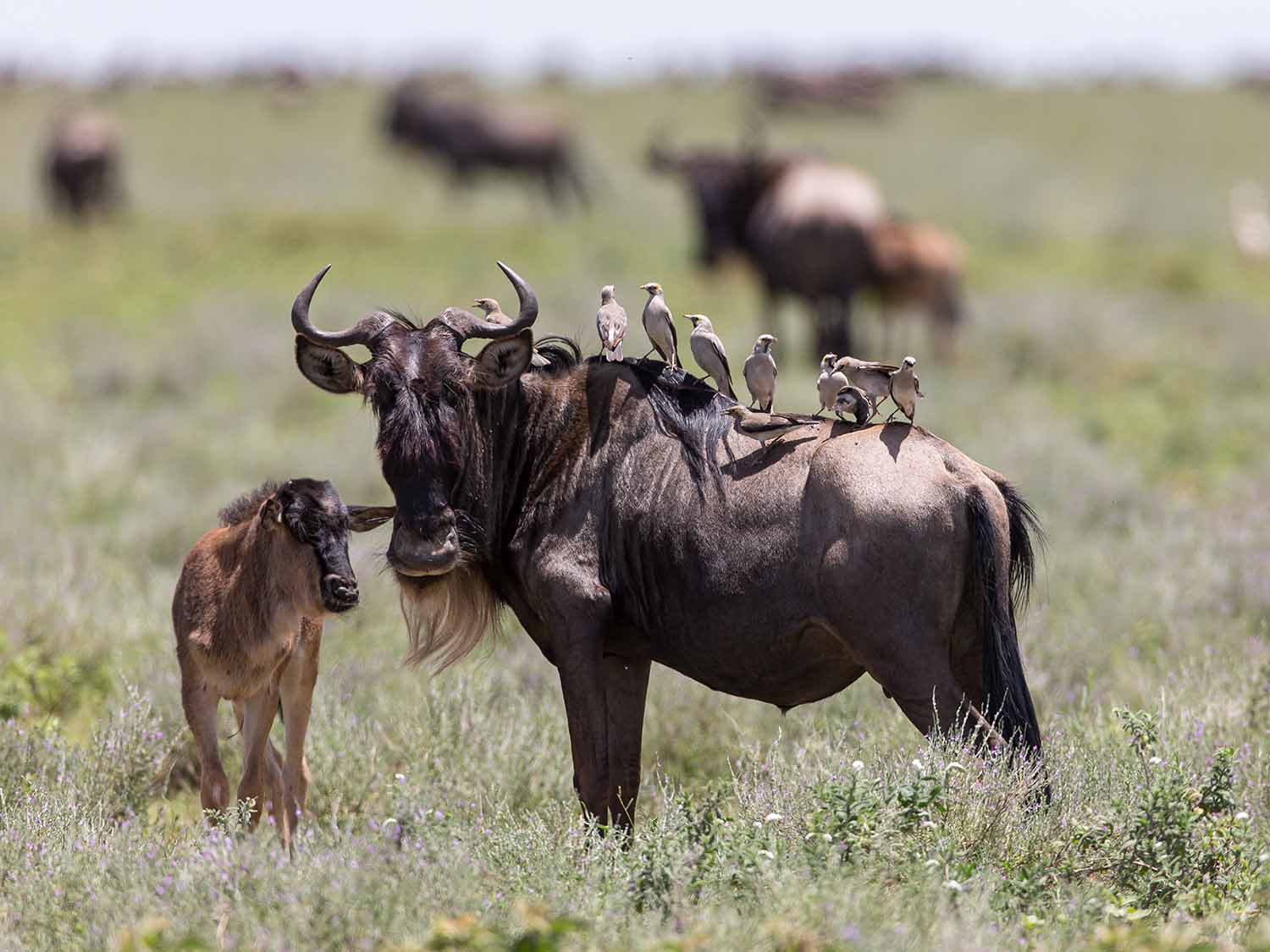
Predators on the prowl in the Serengeti
While the calving season is a time of plenty for the herbivores, it also attracts a high number of predators. Lions, hyenas, cheetahs, and leopards are all drawn to the area, taking advantage of the abundance of vulnerable young animals. For these predators, the calving season is a time of feasting and an opportunity to sustain their own young.
The role of the ecosystem
The calving season is not only essential for the survival of the wildebeest but also for maintaining the balance of the Serengeti ecosystem. The influx of young herbivores provides food for predators, which in turn keeps the herbivore population in check, preventing overgrazing and ensuring the health of the grasslands.
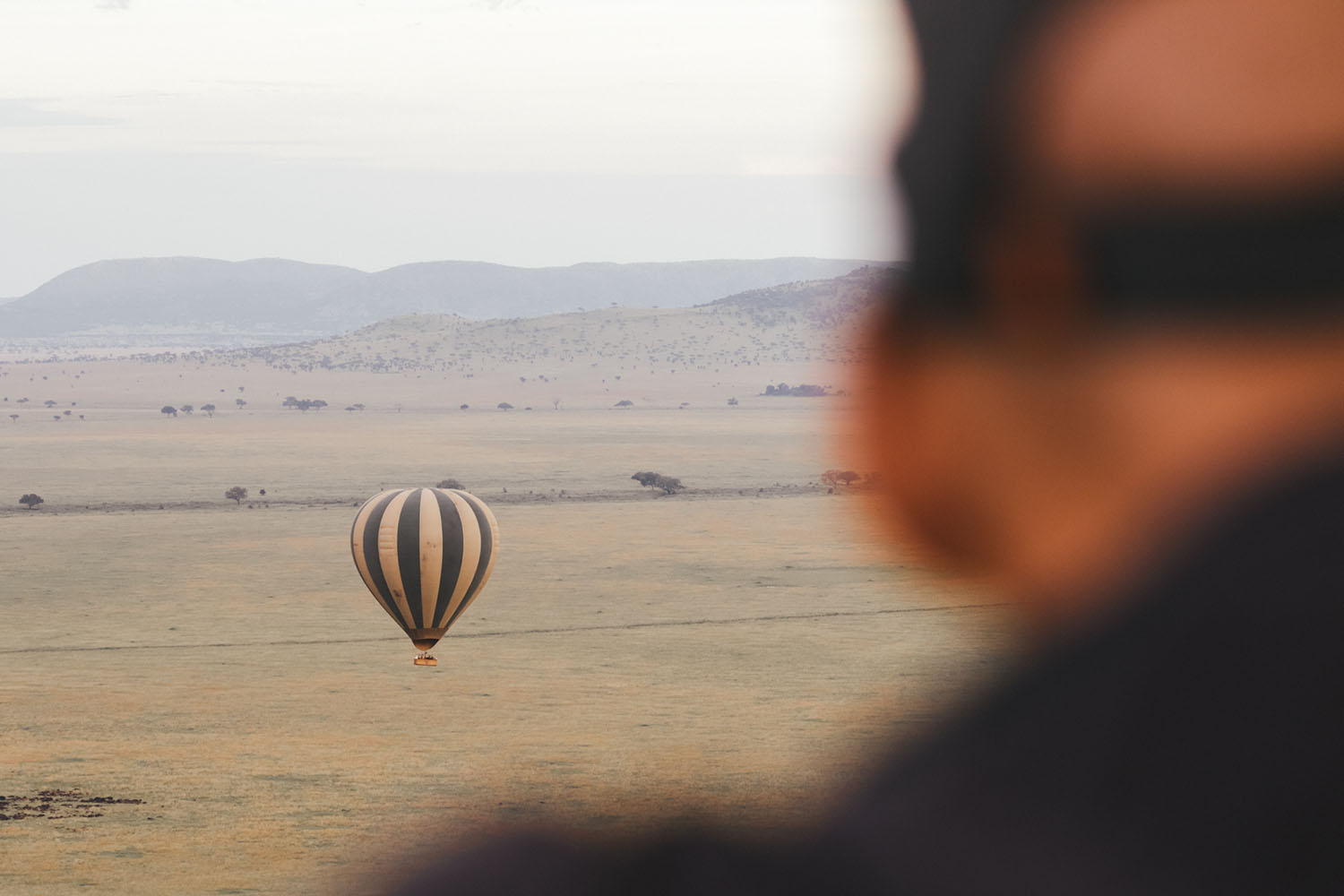
Why choose Usawa and Wilderness?
Wilderness is dedicated to providing an authentic and immersive safari experience in remote and pristine areas of the Serengeti. Our Usawa camp’s sites – named after the Swahili word for ‘balance’ – are strategically positioned to offer exceptional wildlife encounters with minimal impact on the environment.
The majority of tourism outfitters in the Serengeti operate in 40% of the park; however, Wilderness Usawa has ventured into the untapped remaining 60%, ensuring an exclusive and serene experience. We focus on low-impact operations, powered by solar energy and with meticulous water management practices”, adds Catherine.
Our camp sites move with the migration: based in the south during calving season, they transition to the east and west during the mid-migration months, and relocate to the north for the Mara River crossings. By positioning our camp away from the main tourist hotspots, we offer a more secluded and intimate safari experience.
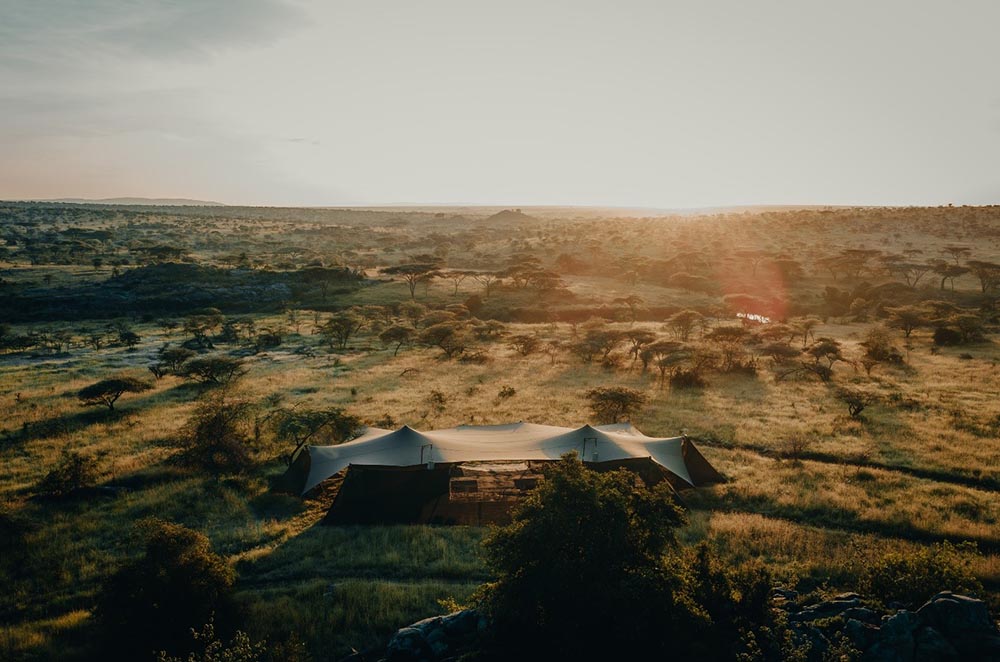
“Our expert guides, among the best in Tanzania, undergo rigorous year-round training and annual evaluations. They are well-versed in wildlife behaviour, terrain, and sensitive handling of sightings, ensuring a respectful and enriching experience for our guests. They start early to maximize game viewing and avoid overcrowded areas, balancing optimal sightings with minimal disturbance to wildlife”, notes Catherine.
Beyond exceptional safari experiences, Wilderness is committed to positive impacts on local communities and conservation efforts. We invest in and manage conservation and vocational programmes in the Serengeti's neighbouring villages. These initiatives create educational and employment opportunities, reducing reliance on activities like illegal tree felling and poaching. Through these efforts, we support both community development and wildlife conservation.
Experience the natural wonder of the calving season in its most authentic form with Wilderness; a breathtaking glimpse into the circle of life and the intricate balance between predator and prey that defines this extraordinary ecosystem.
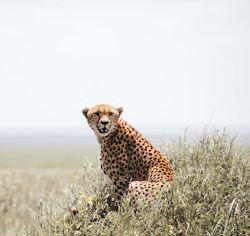

Let’s plan your next journey
Ready?
When we say we’re there every step of the way, we mean it, literally. From planning the perfect circuit, to private inter-camp transfers on Wilderness Air, and easing you through Customs. We’re with you on the ground, at your side, 24-7, from start to finish. Ready to take the road less travelled? Contact our Travel Designers to plan an unforgettable journey.